With the nimble touch of a dedicated artist and the keen eye of a skilled craftsperson, one can transform ordinary objects into dazzling masterpieces using the vibrant tool of spray paint. Whether it’s a street mural painted with expressive strokes, a DIY enthusiast’s homemade decor piece, or a needlework artist’s intricate fabric design, spray paint breathes life and color into various art forms. Yet, beyond the visual magic lies a practical question that many artistic and innovative minds ponder: how long does spray paint last?
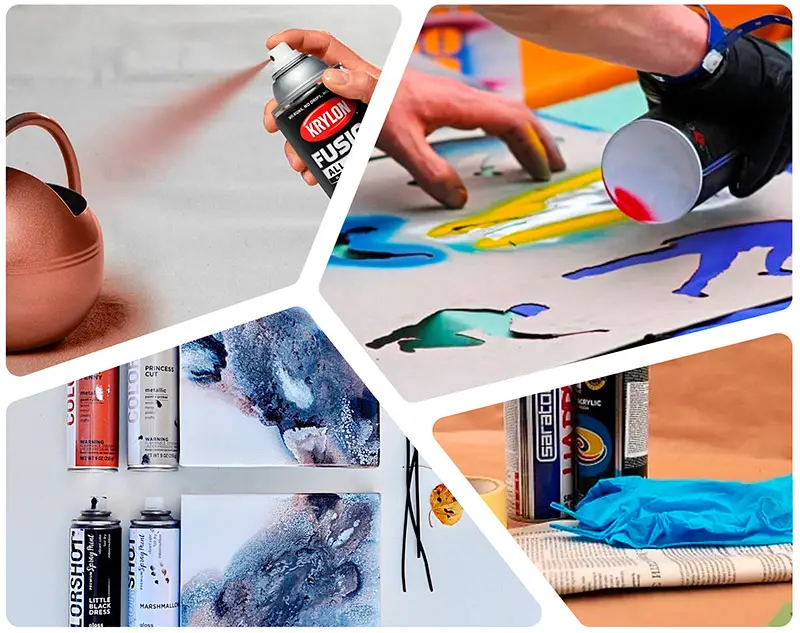
Understanding the shelf life of spray paint isn’t merely a meticulous detail; it’s an essential aspect of resourceful artistry. Knowing how long is spray paint good for can save a project from fading brilliance, ensuring that the artist’s expressive efforts endure in their full splendor. For hobbyists, creative inventors, and those with fine motor skills who revel in the tactile joy of crafting, this awareness transcends mere knowledge—it’s a disciplined approach to preserving the integrity of one’s artwork.
This article, woven with passion and precision, delves into the very heart of spray paint’s longevity, addressing questions about when does spray paint expire, and does spray paint go bad, setting the stage for a colorful exploration of spray paint shelf life.
Understanding Spray Paint Composition
The world of spray paint is as varied and vibrant as the artistic souls who wield it. From the streets of urban landscapes to the workshops of dedicated DIY enthusiasts, spray paint finds its expressive voice in various forms and compositions. Here’s a closer look at the main types and what impacts their longevity:
Types of Spray Paint
- Water-Based Spray Paint: Environmentally friendly and easy to clean, perfect for indoor projects.
- Enamel Spray Paint: Known for its hard and glossy finish, often used for outdoor applications.
- Lacquer Spray Paint: Quick-drying and provides a shiny appearance, commonly used in automotive projects.
- Acrylic Spray Paint: Versatile and adheres to many surfaces; often a favorite among hobbyists.
- Rustoleum: A specific brand known for its protective qualities, but the question of how long does rustoleum last is also vital to consider.
Understanding the difference between airbrush and spray paint can provide more options for artists and hobbyists. While spray paint is typically delivered through an aerosol can and offers a convenient and consistent application, airbrushing requires a more skilled technique. Airbrushing provides more control and precision, especially in detailed work, whereas spray paint is often favored for broader strokes and coverage. Both methods have unique benefits and limitations and can be chosen according to the needs and style of the project.
Factors Affecting Spray Paint Shelf Life
Understanding how long spray paint lasts also requires a meticulous examination of various elements that might cause spray paint to expire or spray paint to go bad. Here’s a perceptive insight into some of them:
- Storage Conditions: Temperature, humidity, and exposure to air can significantly impact spray paint shelf life.
- Can Integrity: Dents, leaks, or poor sealing can lead to quicker degradation.
- Chemical Composition: Different ingredients respond to environmental factors differently, influencing how long the paint is good for.
- Usage: How the spray paint is handled and applied can affect its performance and longevity.
| Type | Ideal Storage Condition | Expected Shelf Life |
|---|---|---|
| Water-Based | Cool, Dry Place | 2-5 Years |
| Enamel | Cool, Dry Place | 5-10 Years |
| Lacquer | Cool, Dry Place | 3-5 Years |
| Acrylic | Cool, Dry Place | 2-5 Years |
| Rustoleum | Cool, Dry Place | 2-4 Years |
From the hands-on artist to the innovative crafter, understanding these aspects ensures that the creative process remains uninterrupted, as colorful and precise as the visions they seek to manifest. Knowing how long spray paint is good for is not just about preservation; it’s about maintaining the expressive vitality of one’s work.
How Long Does Spray Paint Last?
Shelf Life
Unopened Cans:
The longevity of spray paint in an unopened can varies depending on multiple factors, such as:
- Type of Paint: Different compositions like enamel, acrylic, or lacquer have distinct lifespans.
- Storage Conditions: A cool, dry place is ideal for maximizing shelf life.
- Manufacturing Date: Older cans may have compromised integrity, impacting how long the product remains viable.
Opened Cans:
Once opened, spray paint requires specific care to preserve its quality. Here’s how to approach it:
- Proper Sealing: Ensure the can is tightly sealed to maintain its quality.
- Avoid Contamination: Keep the nozzle clean to prevent clogs.
- Common Issues & Solutions: Problems like drying or inconsistency in spray can be addressed with regular cleaning and correct storage.
On Surfaces
The durability of spray paint once applied to various surfaces encompasses multiple aspects:
Lifespan on Different Materials
- Wood: Typically lasts 2-5 years with proper care.
- Metal: Can endure 5-10 years with the right priming and protection.
- Canvas: Potentially lasting for decades if the right type of spray paint and protective finish are used.
Factors Affecting Longevity
- Environmental Factors: Elements like weather conditions and UV exposure can impact the paint’s appearance over time.
- Surface Preparation: How the surface is cleaned and primed contributes to the paint’s durability.
- Paint Type: Specific paints might be more suited to certain surfaces, affecting how long the application lasts.
Enhancing Durability
- Protective Measures: Using clear coats or sealants can prolong the life of the paint.
- Correct Application: Following the right technique and allowing sufficient drying time between coats ensures the paint adheres properly and lasts longer.
Understanding the various factors that influence the longevity of spray paint, both in storage and when applied, provides valuable insights for artists and DIY enthusiasts. This information helps maintain the integrity and brilliance of creative projects, allowing the spray paint to serve as an enduring expression of artistry and craftsmanship.
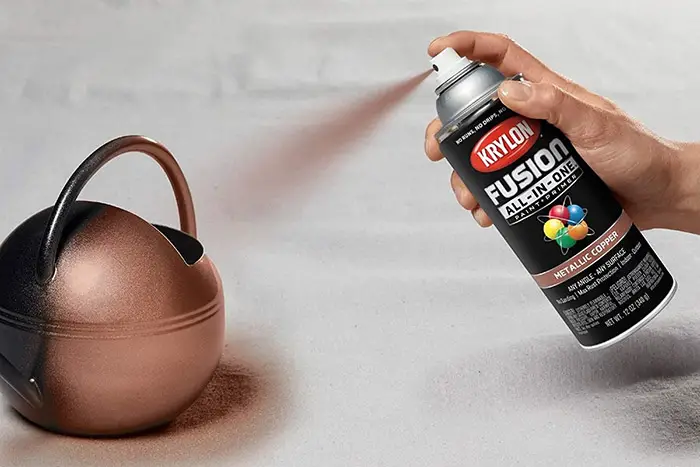
Practical Tips for Artists and Craft Enthusiasts
Creating beautiful art and craftwork with spray paint requires not only a passionate and expressive approach but also practical wisdom in handling and maintaining the materials. Here are some hands-on, resourceful tips to make the most of spray paint in various creative endeavors.
Best Practices for Storing Spray Paint Cans
Whether you’re an inventive hobbyist or a meticulous professional, proper storage is key to preserving spray paint’s quality. Here are some guidelines:
- Store Upright: Keep cans in an upright position to prevent leakage or clogging.
- Temperature Control: Store in a cool, dry place, avoiding extreme temperatures.
- Keep Away from Sunlight: Prolonged exposure to UV rays may affect the color and composition.
- Check Expiry Dates: Ensure that the product is within its shelf life for optimal performance.
Tips for Applying Spray Paint to Prolong Its Life
The application process greatly affects how long the spray paint lasts on the chosen surface. Here are some skilled tips:
- Surface Preparation: Clean and prime the surface for even application.
- Use Proper Technique: Apply in thin, even coats, using sweeping motions.
- Follow Drying Times: Allow sufficient time between coats for drying to prevent cracks or peeling.
- Seal the Surface: Use a sealant or clear coat if necessary to enhance durability.
Solutions for Common Problems Related to Spray Paint Aging, Cracking, or Peeling
Despite best efforts, spray paint might sometimes show signs of aging, cracking, or peeling. Here’s how to address these issues:
Aging:
-
- Recoat If Needed: Light sanding and recoating can refresh the appearance.
- Use UV-resistant Products: These help in maintaining color vibrancy.
Cracking:
-
- Avoid Thick Layers: Applying thin, even coats prevents cracking.
- Use Compatible Products: Ensure that the primer, paint, and sealant are compatible to avoid reactions that cause cracking.
Peeling:
-
- Proper Surface Preparation: Peeling often occurs if the surface wasn’t cleaned or primed properly.
- Adhesion Promoters: These products can enhance the bond between the paint and the surface.
Removing spray paint from plastic requires care and attention to avoid damaging the underlying material. Common methods include using a mild solvent like rubbing alcohol or acetone applied with a soft cloth. Gently rubbing the affected area can lift the paint without harming the plastic. It’s advisable to test the solvent on a small hidden area first to ensure it won’t damage the plastic, and always follow with a thorough rinse with water to remove any residue. This process helps restore the plastic surface while preserving its integrity.
These practical, detail-oriented tips are essential tools for anyone passionate about using spray paint in their art or craft projects. By understanding how to properly store, apply, and maintain spray paint, artists and craft enthusiasts can ensure that their creative expressions remain vivid and captivating for years to come. Whether you’re a dexterous painter or a design-aware DIYer, these insights empower you to create with confidence and joy.
The Eco-friendly Aspect of Spray Painting
In an era where sustainability and environmental consciousness are paramount, engaging in creative endeavors with spray painting also calls for a responsible approach. This extends to choosing eco-friendly products and adopting practices that minimize harm to the environment.
Considerations for Safe Disposal of Spray Paint Cans
Disposing of spray paint cans should be done with caution and mindfulness of environmental regulations. Here’s a guide to doing it the right way:
- Use Up the Paint: If possible, utilize the entire content of the can for your projects or share with others.
- Recycle Where Applicable: Check local recycling guidelines to see if empty cans can be recycled in your area.
- Dispose of Hazardous Waste Properly: If the can still contains paint, it may need to be taken to a hazardous waste facility.
- Avoid Illegally Dumping: Never dispose of spray paint cans in regular trash without following proper guidelines, as it can be harmful to the environment.
How to Choose and Use Environmentally-Friendly Spray Paint Options
With the growth of environmental awareness, many manufacturers are offering environmentally-friendly spray paint options. Here’s how to choose and use them responsibly:
- Look for Eco-friendly Labels: Seek products labeled as low-VOC (Volatile Organic Compounds) or non-toxic.
- Check Ingredients: Look for water-based formulations, which are typically more eco-friendly.
- Use Properly: Even eco-friendly options should be used with care, in well-ventilated areas, and with proper protection to minimize exposure.
- Support Responsible Brands: Purchase from brands known for their commitment to environmental sustainability.
A Comparison of Common Spray Paint Types
| Type | Eco-friendliness | Common Uses | Notes |
|---|---|---|---|
| Water-based | High | Arts, crafts, indoor projects | Low VOC, easy to clean up |
| Enamel | Moderate | Outdoor projects, metal surfaces | More durable but may contain higher VOC levels |
| Lacquer | Low | Automotive, high-gloss finishes | Generally higher in VOCs, use with proper ventilation |
By being observant and diligent about the eco-friendly aspect of spray painting, artists and craft enthusiasts can contribute to a greener planet. This approach aligns with a passionate and responsible attitude towards art and the world, allowing creative expressions to flourish without compromising environmental integrity. Whether it’s through safe disposal practices or choosing sustainable products, every decision counts in crafting a responsible artistic legacy.
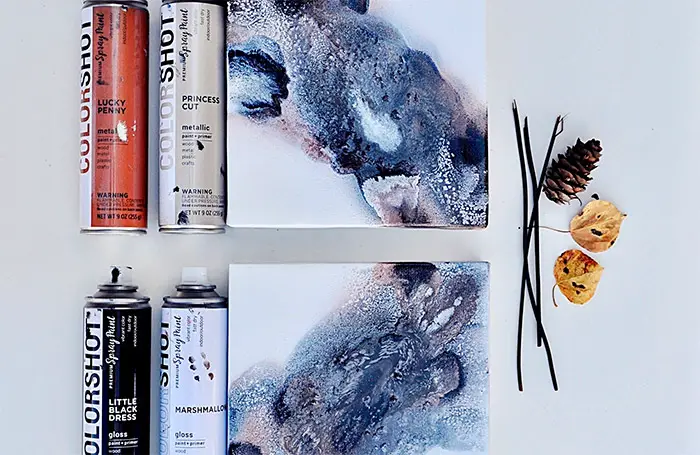
Creative Projects and Ideas
Spray paint is a versatile medium that has been embraced by artists, crafters, DIY enthusiasts, and more. Its vibrant colors and adaptable application allow for endless creative possibilities. Whether you’re inspired by renowned artists or looking to make the best out of old or almost-expired spray paint, there are myriad ways to infuse creativity into art, craft, needlework, and homemade projects.
Ideas for Art, Craft, Needlework, and Homemade Projects Using Spray Paint
- Artistic Canvas Painting: Create abstract or stencil art on canvases.
- Furniture Upcycling: Transform old furniture with a fresh coat of spray paint.
- Fabric Design: Use fabric-specific spray paint for designing T-shirts or bags.
- Garden Decor: Enhance plant pots, sculptures, or fences with weather-resistant spray paint.
- Needlework Accentuation: Add metallic or glossy finishes to embroidery or knitting projects.
- Homemade Gifts: Customize picture frames, candle holders, or jars for personalized gifts.
Inspiration from Renowned Artists or Crafters
- Banksy: Learn from the mystery-shrouded street artist who’s known for provocative stencil works using spray paint.
- Shepard Fairey: Draw inspiration from his bold and socially conscious visual designs.
- DIY Bloggers: Follow talented craft bloggers who offer step-by-step guides for spray paint projects.
How to Make the Best Out of Old or Almost-Expired Spray Paint
Old or near-expiration spray paint doesn’t have to go to waste. Here’s how to put it to innovative use:
- Mix and Match: Blend colors to create new shades for abstract art.
- Texture Exploration: Experiment with splatter or layering techniques for unique textures.
- Crafting with Kids: Encourage children’s creativity with supervised painting of small crafts.
- Community Projects: Use the remaining paint in community art projects or murals.
Table: Projects Matched with Suitable Spray Paint Types
| Project | Spray Paint Type | Tips & Notes |
|---|---|---|
| Outdoor Mural | Enamel, Lacquer | Use weather-resistant products, apply clear sealant. |
| Fabric Design | Fabric Spray Paint | Test on a hidden area first, follow drying guidelines. |
| Metal Furniture Upcycle | Rustoleum, Enamel | Sand and prime the surface, apply thin even coats. |
Being resourceful and imaginative with spray paint opens up a realm of possibilities. Whether it’s a precise and focused work of art, expressive and original furniture transformation, or inventively using up almost-expired spray paint, the creative journey is filled with exploration and joy. From hobbyists with fine motor skills to professionals with a color-conscious approach, spray paint offers a vibrant and tactile medium to bring ideas to life.
Conclusion
Spray paint has become an indispensable tool for many in the realms of art, craft, needlework, and homemade projects. Its vast array of applications and accessibility has spurred innovation, creativity, and expression across various mediums. However, a nuanced understanding of how long spray paint lasts, both in storage and when applied, can significantly enhance its utilization.
Summarizing the Factors That Influence How Long Spray Paint Lasts
In Storage:
-
- Shelf Life: The type of spray paint, such as water-based, enamel, or lacquer, affects its shelf life.
- Storage Conditions: Temperature, humidity, and exposure to air all play a role in how long spray paint remains good for use.
- Opened vs. Unopened Cans: Proper sealing and care can extend the life of opened cans, while unopened cans generally last longer.
When Applied:
-
- Surface Material: Different materials like wood, metal, or canvas may react differently to spray paint, influencing its longevity.
- Application Techniques: Proper application and preparation of the surface can enhance the durability of spray paint.
- Environmental Factors: Exposure to sunlight, moisture, and other weather conditions can affect how long the spray paint remains vibrant and intact.
A Reminder of Proper Handling, Application, and Storage
For those passionate and dedicated to their artistic pursuits, a meticulous and innovative approach to spray paint can translate into remarkable creations. Here are some essential reminders:
- Proper Handling: Always follow the instructions on the can, and use proper safety measures during application.
- Skillful Application: Experiment with techniques but always prepare the surface well to ensure that the spray paint doesn’t go bad on the object.
- Mindful Storage: Understand the spray paint’s shelf life, and store cans in a controlled environment to preserve their quality.
In closing, the expressive world of spray painting is not merely about splashing colors but involves a disciplined, persistent, and resourceful exploration of possibilities. From the initial choice of spray paint to the final stroke, every decision is part of a journey towards inspired and aesthetic creation. By focusing on the factors that influence how long spray paint lasts and embracing best practices in handling, application, and storage, artists and craft enthusiasts can continue to innovate, inspire, and enrich the world of art. Whether a hobbyist, a DIY enthusiast, or a professional artist, spray paint offers a canvas of endless potential. Let’s cherish it with care, creativity, and conscious choices.

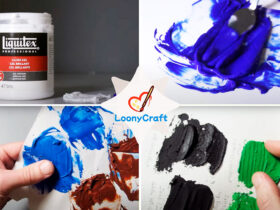



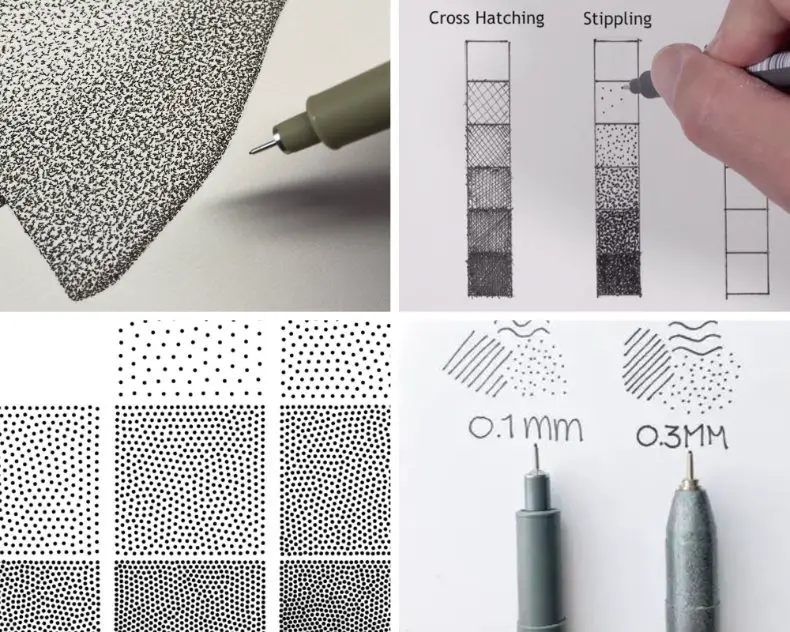

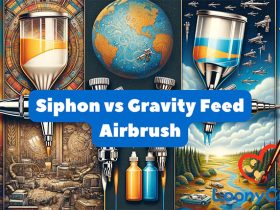




Leave a Reply